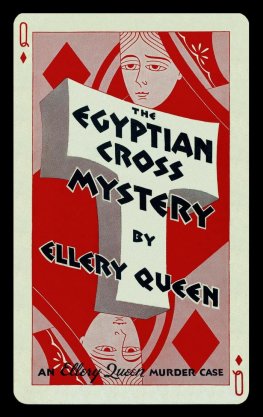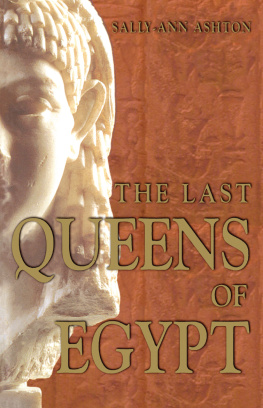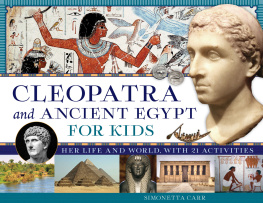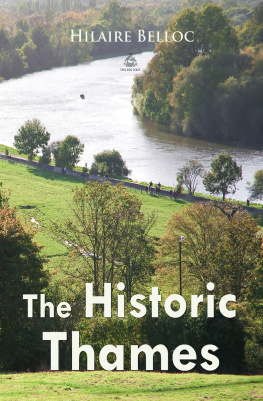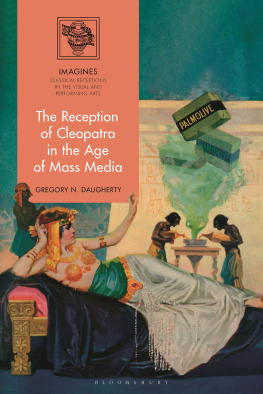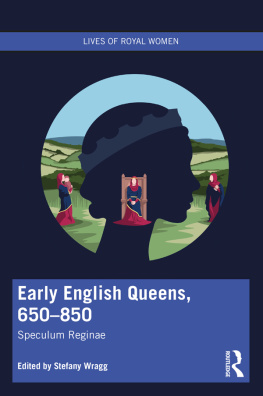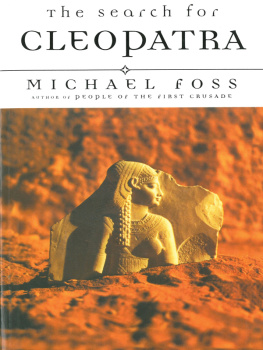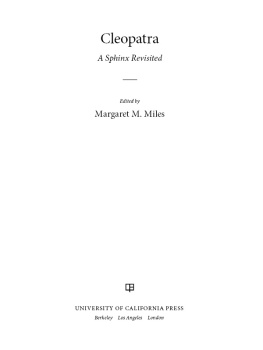Transcribers Note: The original copy of this book wasnt very well proofread, if at all. A large number of printing errors have been corrected, including transposed full lines of text. In one place (noted below) at least one line was omitted completely: it wasnt possible to source another edition to check what the missing words might have been. The spelling and hyphenation of Egyptian names are often inconsistent.
Cleopatra.
PREDECESSORS
OF CLEOPATRA
BY
LEIGH NORTH
5 Drawings by G. A. Davis
BROADWAY PUBLISHING CO.
AT
835 BROADWAY, N. Y.
1906
Copyrighted, 1906.
by
Broadway Publishing Co. ,
All Rights Reserved.
TO
MY HUSBAND
INTRODUCTION.
In attempting even a brief and imperfect outline of the history of Egyptian queens the author has undertaken no easy task and craves indulgence for its modest fulfillment. The aim has been merely to put the little that is known in a readable and popular form, to gather from many sources the fragments that remain, partly historic, partly legendary, of a dead past. To presenthowever imperfectlysketches of the women who once lived and breathed as Queens of Egypt, which has been more ably and completely doneas the period was less remote and the sources of information fuller, for their royal sisters of other lands.
A short article published some years ago in Lippincotts Magazine may be said to be the nucleus of the present volume, the writers interest in the subject having been awakened by the study necessary to its preparation.
We enter a house through the portico or vestibule. We form acquaintances on somewhat the same principle. We begin perhaps with the weather, we exchange comments on trifles, we pass through an introductory stage of intercourse before we reach the real heart of the man or woman who, in time, becomes our dearest friend. Skip the introduction if you will, busy reader, but metaphorically it forms the portico or vestibule of the Egyptian House.
From the darkness which envelopes the centuries modern research has brought to light much that was unknown or forgotten. With almost the creative touch it has made the dry bones to live again and link by link drawn out the long chain of the years. What was once a mere roll of names with a wide hiatus here and there has grown to be a record of the words and deeds of men of like passions with ourselves. We feel once more in touch with the past, as it is the aim of the highest altruism to beat responsive to the heart of the present and the by-gone faces look forth by the side of modern man and claim the universal brotherhood.
Well may we marvel at the faith, the patience, the ingenuity which has unraveled so much of the tangled skein in The Story of the Nations. Like Cuvier, from a single bone elaborating a whole animal, the Egyptologist has patiently evolved from shreds of parchment, from fragments of pottery, from broken plinth and capital a more or less complete whole. He has woven a tapestry from which some of the figures start forth with a lifelike vigor.
Few countries claim such antiquity as Egypt and of none were the estimated dates more widely apart. Sometimes involving periods of hundreds and thousands of years. An accumulation of difficulties meets the student as it does the explorer. A cycle of time, beside which modern life seems like a single breath. A language, at first indecipherable, and even now imperfectly read. The hasty guesses of scholars anxious to prove some point or be in the vanguard of discovery; broken monuments, rifled tombs, and inscriptions, mutilated, erased and altered by the monarchs of succeeding generations. Among all these difficulties lies the way. But with patience and care we are rewarded and with imagination for a servant, not a master, one arrives, as the French say (at least in a measure), at last.
The list of authorities consulted by the author would be too long to enumerate, but among them may be mentioned Rawlinson, Wilkinson, Maspero, Erman, Ebers and later Edwards, Sayce, Petrie and Mahaffy, whose interest is so absorbing and the researches of some of whom are of such recent date. To these may be added the study of all available pictures and photographs, and the experiences of late travel and travellers.
CHAPTER FIRST.
THE BLACK LAND.
Kem, the Black Land, in hieroglyphic, or Kemi, in the later and more familiar demotic, was so called from its dark and fruitful soil, a loam, which turned up freshly, after a recent inundation of the Nile, has, as one traveller describes it, a brown and velvety lustre.
Through it winds and flows the great river of which Homer speaks as Egypts Heaven descended stream and that more than any other has set its stamp upon the country and its inhabitants. So potent for weal or woe is it that one scarce wonders it was worshipped as a deity, and the Arabs call it El Bahari, the sea. It is difficult to find the word travel in their language, with the Egyptian it is always up and down stream. From the river he drew the fish which formed part of his daily food, its fructifying waters, spreading over the land, called forth abundant harvests, and from the mud on its banks he built the hut in which he lived, or manufactured the bricks for the construction of his tomb or other more ambitious edifice. The rushes that grew beside it furnished his writing material, and its muddy or turbid water, as a beverage, had for him the charm of a crystal rill.
Leigh Hunt says of the Nile:
It flows through old hushed Egypt and its sands


